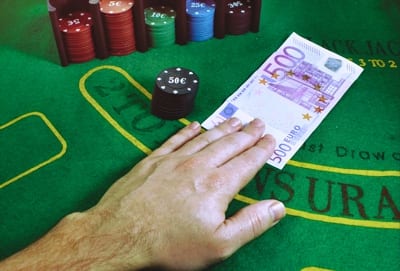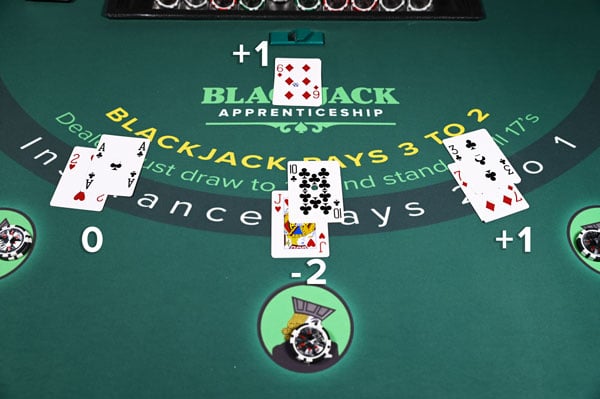How Do You Count Cards In Poker
Standard Poker Hand Ranking. There are 52 cards in the pack, and the ranking of the individual cards, from high to low, is ace, king, queen, jack, 10, 9, 8, 7, 6, 5, 4, 3, 2.In standard poker - that is to say in the formal casino and tournament game played internationally and the home game as normally played in North America - there is no ranking between the suits for the purpose of comparing.
If playback doesn't begin shortly, try restarting your device. You're signed out. Videos you watch may be added to the TV's watch history. As each card is dealt, you will either add 1, subtract 1, or do nothing based on each card’s value. Step 2: The Running Count Keep A Running Count By Adding Or Subtracting Every Card That You See In Each Shoe. As each card is dealt, we will update our “running count” with the new information we are given. The most basic card count is what is often referred to as a high low system. This means that you assign the low and the high cards different values. The values are -1, 0 and 1 and by keeping the count you can determine what types of cards are left in the deck. You want to figure out if the deck has a shortage of Aces, Nines and Tens.
It’s not uncommon for people to hear of cheating when they hear the term “card counting”, but the technique doesn’t actually have anything to do with cheating at all. What’s more is that you don’t need to be a math wiz to be able to learn how to do it.
Nevertheless, it’s not uncommon for people to want to learn how counting cards works, and in poker specifically, it can be an effective strategy that can give you the edge over your opponents. When you first start learning how to count cards, you only need to get a hang of three simple things, namely Texas Hold’em odds, counting your outs and pot equity. This guide will show you the basics of counting cards so that you can improve your Texas Hold’em game:
How to Count Cards: Counting Outs
Any good poker player needs to be able to count outs. Learning how to count outs will help you improve your game and give you excellent preliminary knowledge before you truly understand how to count cards in poker. So, what is an “out”? The term “out” in the context of poker refers to any card that will make your hand stronger or give you the potential of turning your hand into a winning one. To be able to identify cards that will do this to a hand, you need to have good knowledge of hand rankings. Thankfully, calculating outs is relatively simple:
Remember that counting cards is not an exact science. Unlike the example above, you will never know which cards your opponent is holding. As a result, you need to pay attention to how they play, when they produce their flop cards, how much they are betting while also considering the possible available combinations. Don’t forget that they could always be bluffing!
Counting Cards: Poker Pot Equity
You will be able to grasp pot equity when you get the hang of counting cards. It’s a natural extension of card counting and involves calculating the likelihood of your chances of forming a winning hand and thus taking the pot.
There’s a method for calculating pot equity, and it’s known as the “Rule of Two and Four”. It is only applied during the flop and river stages of a round, and that’s because they are the only two stages where more cards are revealed. Here the two simple rules within the Rule of Two and Four:


For example, if you had a draw with 12 possible outs on the flop, you would multiply this by four, giving you approximately a 48% chance of getting the right cards to complete your hand. Furthermore, if you are left with 12 outs on the turn, you would have a 24% chance of completing your hand. Calculating your pot equity can be extremely useful when it comes to determining your moves in a game, reducing the number of needless bets you have to make, and proving the importance of learning how to count cards in poker.
The underlying mathematics of this process is complex, but worth knowing if you want to calculate your equity on the fly. Say you have 10 outs on the turn with 46 cards left in the deck, your probability of hitting is 10/46. By imagining that there are 50 cards in the deck, the probability is 10/50, or 20/100, meaning that your chance of getting the pot equity is 20%.
However, the real probability of 10/46 is expressed as 21.7%, which would mean that the number of outs would have to be multiplied by 2.174 – an incredibly hard sum to do when your opponent just raised €50! Regardless of how you choose to use it, if you want to learn how to count cards, you need to know how to judge your pot equity.
Texas Hold’em Odds: Hole Cards

To give you a greater understanding of how difficult it can be to predict an opponent’s hand, as well as giving you a better insight into how to count cards effectively, it’s important to know the odds of receiving some of the best and worst hole cards. In addition, we’ll give you the probability of winning with these hands in a standard four-person game.
How Do I Count Cards In Poker
Now that you’ve learned the ins and outs of how to count cards, pot equity, and Texas Holdem odds, why not put your skills to the test of one of our online poker games?
Can You Count Cards In Poker

How To Play Poker Cards
Hello, and welcome to the Instructables community!It's great that you've decided to tell the world about something you've made by publishing an Instructable. We just wanted to let you know that your project still needs a little more work if you want it to be well received on Instructables.Projects that don't include certain basic elements tend not to get the attention that they deserve, and so we'd love for you to check out the list below of what makes a successful Instructable.Successful projects on Instructables include:- clearly written details of a finished project with instruction- as many steps as are necessary to explain your project- clear images that you took of your project for most, if not all of your steps- an intro image- proper spelling and grammar- appropriate cautions or safety considerationsI'll give you another opportunity to make any final changes to your project before we publish it. Once you're all set to go, please republish your project and send me a quick comment letting me know that you've made some changes. I'll give it a quick final check to make sure you're on the right path, and then remove this note.Thanks for your submission and we hope to see your project published soon!